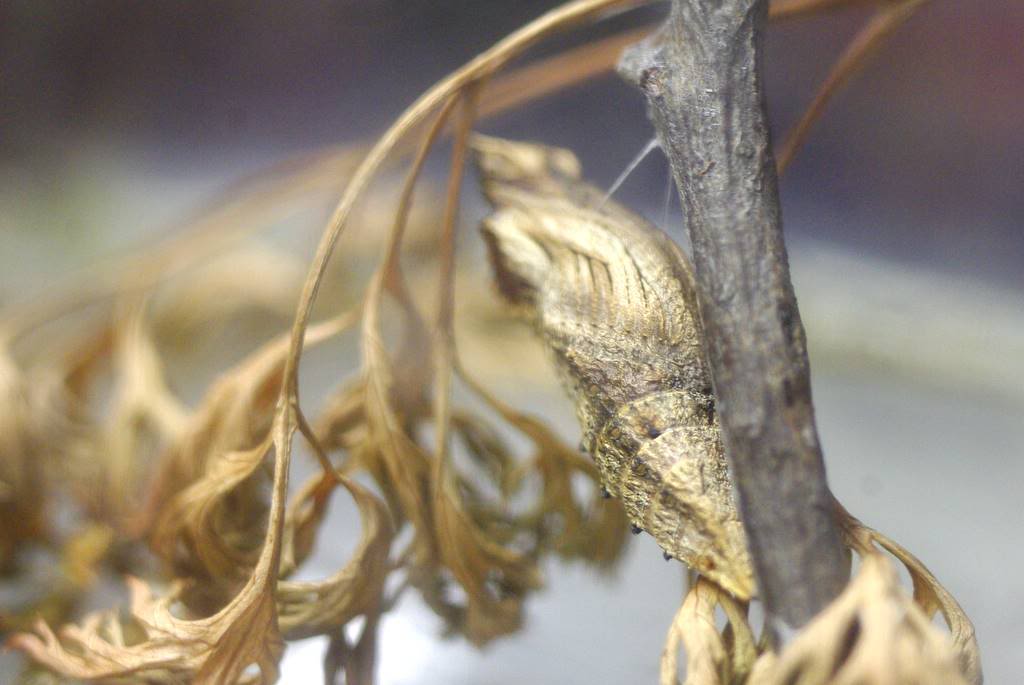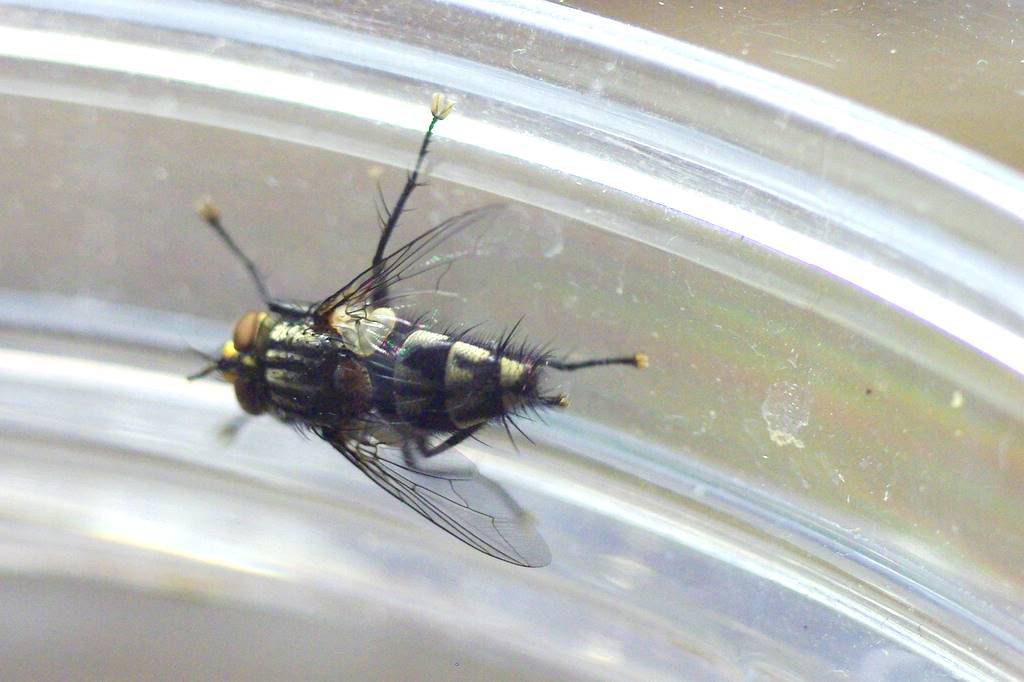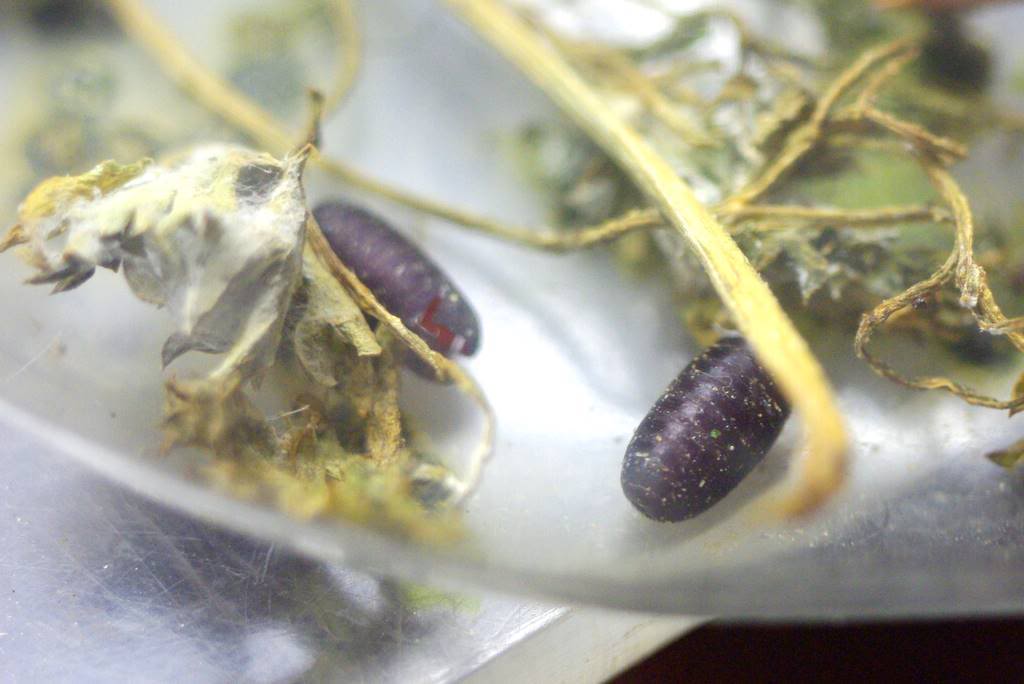Where did you come from?
Earlier this autumn I had a late-season discovery on my parsley: another black swallowtail caterpillar! I had already rescued and raised some of these caterpillars this summer, and was surprised to see one so late in the season. Knowing that as soon as this youngster got big enough for me to spot him the raccoons would also see him, I put him into my caterpillar jar and watched him pupate.
I assumed (correctly I think) that he'd overwinter in this form, then complete his transformation and emerge in the spring once it warmed up. This happened as I expected, at least the pupating part. What I didn't expect was to find a fly in the closed jar weeks later.
Here's the caterpillar's winter residence:
That's an empty chrysalis from the previous brood higher on the stick. It's really interesting how it tried to match the color of the surrounding dead parsley leaves. That's three colors I've seen them form: dark brown when on the stick, green when surrounded by green leaves, and light brown. Very cool!
Anyhow, I'm not here to talk about the caterpillar or chrysalis today -- I'm here to talk about the fly.
About a week ago my wife noticed a fly in the closed jar. Strange, but I let it out, screwed the lid back on and that was the end of that.
Until yesterday, when I saw another fly in there. Or maybe it was the same fly. Both seemed equally improbable.
So I spent some time trying to photograph this new appearance.
Only after I had been looking into the jar for at least 15 minutes did I notice the empty puparia (pupal cases):
Ah, okay. So I know where the flies came from now -- sort of. Where did the eggs come from initially? Were they on the caterpillar? Were they laid in the dried caterpillar poop from the previous brood?
Those questions bothered me, so I did some research on bugguide.net and found that this is a Tachinid fly, probably Tachinid uramya. The only additional info I found there was not good news: "Nearly all members of this subfamily are said to be parasitic on Coleoptera or Lepidoptera larvae."
Which probably means that my caterpillar is now an ex-caterpillar, and it will not emerge in the spring, or ever.
Shoot.
I'll keep the jar around all winter and see what happens in the spring though, just to be sure.
At least I learned something today.
.
Which probably means that my caterpillar is now an ex-caterpillar, and it will not emerge in the spring, or ever.
Shoot.
I'll keep the jar around all winter and see what happens in the spring though, just to be sure.
At least I learned something today.
.















That's incredibly disappointing but fascinating at the same time.
Interesting. I love how the chrysalis changes colour - love the "gold" look of the second one.
Christine: that's the one that probably contains a dead caterpillar. :-(